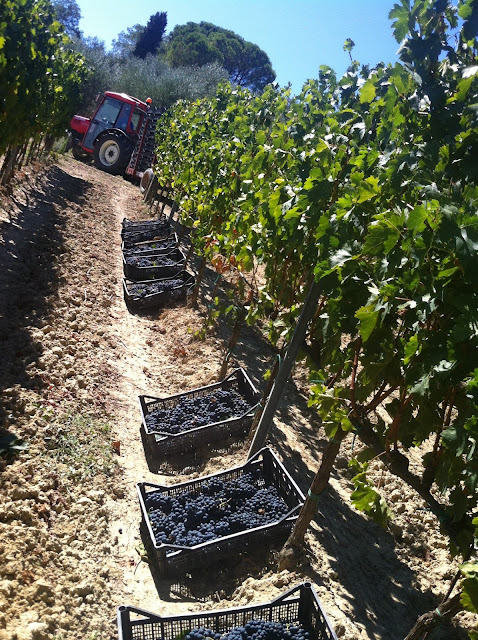This post today is
dedicated to all those whom lost their lives and the towns that were
destroyed by the 6.2 magnitude earthquake that hit Italy this past
Wednesday August 24th, 2016. Some of the towns affected
in central Italy were Amatrice, Accumoli, Arquata del Tronto, Norcia
and others. As many of you have probably heard much of the detail I
won't reiterate this terrible tragedy. The pictures are
heartbreaking. The death toll is close to 300 and growing with
hundreds injured.
 |
| Chiesa del Sacra Cuore in Capricchia by Bruno |
According to CNN
the town that got hit the hardest was Amatrice with over 180 deaths.
A fellow Italian blogger, Mike
Madaio of Undiscovered Italy, came up with a fantastic idea to
host a #virtualsagra as this weekend would've marked the 50th
anniversary of the Sagra degli Spaghetti all'Amatriciana meaning
Festival of the dish, spaghetti all'amatriciana. The festival is
held every year on the last weekend of August. This dish hails from
the town of Amatrice located in the Lazio region of Italy around 60
miles northeast of Rome.
 |
| The town of Amatrice by Simone Tagliaferri |
 |
| Amatrice by Simone Tagliaferri |
I've actually
never prepared spaghetti all'amatriciana before because I'm not one for anything that has a
kick to it (in this case chili), but in honor of this tragedy it's a must to prepare this dish to honor Amatrice through food and wine. It's a rather simple dish to prepare with few ingredients including spaghetti (although many use bucatini),
pecorino cheese, chili and guanciale. Guanciale, pork butt, is used
in this dish, but with short notice of preparing for this and having
a newborn I wasn't able to escape to hunt that down, but you can
substitute this dish with bacon or pancetta. This is also a dish
well enjoyed in Rome where tomatoes are an additional ingredient, which I
prefer myself. I topped it with some Tuscan extra virgin olive oil and fresh basil. I'll discuss more about the wine, Montupoli Montepulciano d'Abruzzo, and pairing when I write about the wine in an upcoming blog.
Unfortunately this
festival won't be taking place this year and who knows what the
future brings, but we can all pray for the families whom have lost
loved ones and the long road ahead for these towns in rebuilding
their history, homes and lives. I'm offering some links for you to
be able to go to and donate as well. I can't say I've been to this
area specifically, but as a fellow Italian American a donation is the
least I can do to help and I hope you feel the same way too. It's
important we support each other in this world as you never know when
the time may come that you would need the support in return.
Croce
Rossa Italian (Italian Red Cross)















